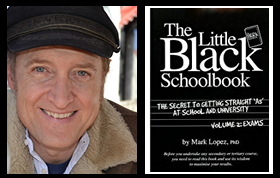Dr Mark’s The Meaning in a Nutshell
Elia Kazan (director), Budd Schulberg (writer), On the Waterfront (1954)
The film On the Waterfront (1954) was directed by Elia Kazan from a screenplay by Budd Schulberg that drew on a series of articles by the journalist Malcolm Johnston published in 1948 that dealt with organised crime on the waterfronts of New York and New Jersey. The film was intended to draw attention to a contemporary social problem, the infiltration of the waterside workers’ unions by organised crime syndicates. The film invites the cinema audience to be sympathetic to the plight of the workers who are the victims of these criminals and to see the virtue of cooperating with the Crime Commission that sought to clean up the docks, ridding them of this criminal activity.
In this sense, the film offers a vindication of the act of informing to authorities, depicting this as no easy task, but one that requires great courage and personal risk. It could be argued that both Kazan and Schulberg sought to cinematically justify their separate decisions to cooperate with the House Un-American Activities Committee and name communists and communist sympathisers in the entertainment industry. These actions contributed to the blacklisting of many people whose careers were damaged or destroyed. As a consequence, Kazan, in particular, was vilified. From his perspective, this was unjust. Both Kazan and Schulberg were of the Left, and both men were interested in a project that was sympathetic to the plight of working-class people and would therefore demonstrate their left-wing credentials to their critical peers in the entertainment industry.
The film centres on the anti-hero, Terry Malloy, an ex-boxer and working-class loner who is associated with a crime gang (which also includes Terry’s brother Charley). Terry Malloy’s troubled conscience leads him on an emotionally painful and physically dangerous path to redemption. In this sense, the film is as much a psychological drama about the complexities of dealing with conflicting loyalties, and the demands of one’s conscience, as it is about the nature of waterfront crime. Terry Malloy is a man who has lost his moral compass and who struggles valiantly to regain it. For much of the film, Terry Malloy is torn between his loyalty to his criminal brother Charley and his loyalty to his virtuous new girlfriend Edie. He is also torn between his loyalty to his (criminal) father figure Johnny Friendly and his loyalty to his (religious) father figure Father Barry. Terry Malloy is torn between self-preservation and altruism, wanting to save himself from harm while also wanting to stand up for the rights of his community. All of this is further complicated by the way that the waterside workers and police mistreat him after he puts his life on the line for their benefit by initially talking to investigators and later by cooperating with the Crime Commission. Terry Malloy’s actions put his life at great risk, and cost his brother his life. These actions eventually succeed in uniting the waterside workers against the crime boss. However, the ending of the film is ambiguous.
After Terry’s brutal brawl with the crime boss that left both men bloodied, with Terry Malloy nearly killed after the crime boss’s thugs intervened, it seems that the crime boss has lost his power over the waterside workers. The workers ignore the shouts of the crime boss and follow Terry Malloy into their place of work. However, there is a very real chance that the crime boss will act on his threats to eliminate those who opposed him, and there is no guarantee given by the film that the Crime Commission will be successful in cleaning up the waterfront. As the film was being made, the real Crime Commission was falling well short of its objectives.
On the Waterfront is also appreciated for its cinematic techniques. To convey its gritty social message the filmmakers employed the style of neo-realist cinema, which had recently been developed in Italy. The film was shot in winter in authentic locations relevant to where these kinds of events would have taken place. It used natural lighting and was filmed in all-weather conditions. It mixed professional actors with real waterside workers who were used as extras for the crowd scenes. The film was also a showcase for method acting, which emphasised psychological realism. The actors were invited to live their roles rather than perform them. Rather than act sad, the actors were sad. Rather than act happy, the actors were happy. The actors were invited to live their scenes, and spontaneity was encouraged, which meant that an actor may never do the scene the same way twice. This gave the performances great emotional authenticity.
Student resources by Dr Mark Lopez
© Mark Lopez 2021 All RIGHTS RESERVED
The purpose of the concise notes of Dr Mark’s The Meaning in a Nutshell is to provide much needed help to students seeking to unlock the meaning of the texts with which they have to deal. (More elaborate notes are provided in lessons as part of my private tutoring business.)
Subject: On the Waterfront meaning, On the Waterfront themes, On the Waterfront analysis, On the Waterfront notes
